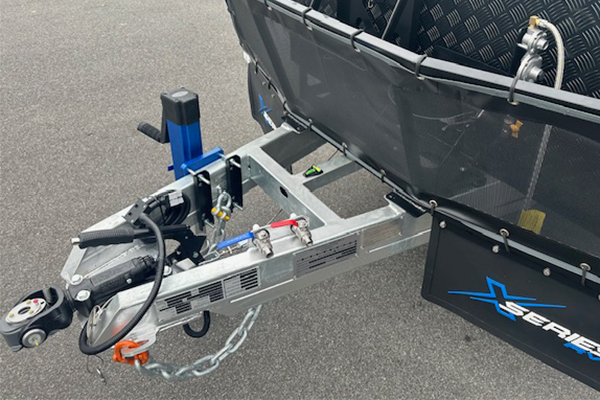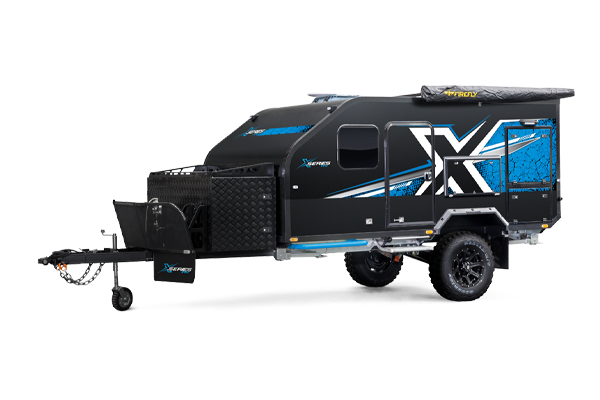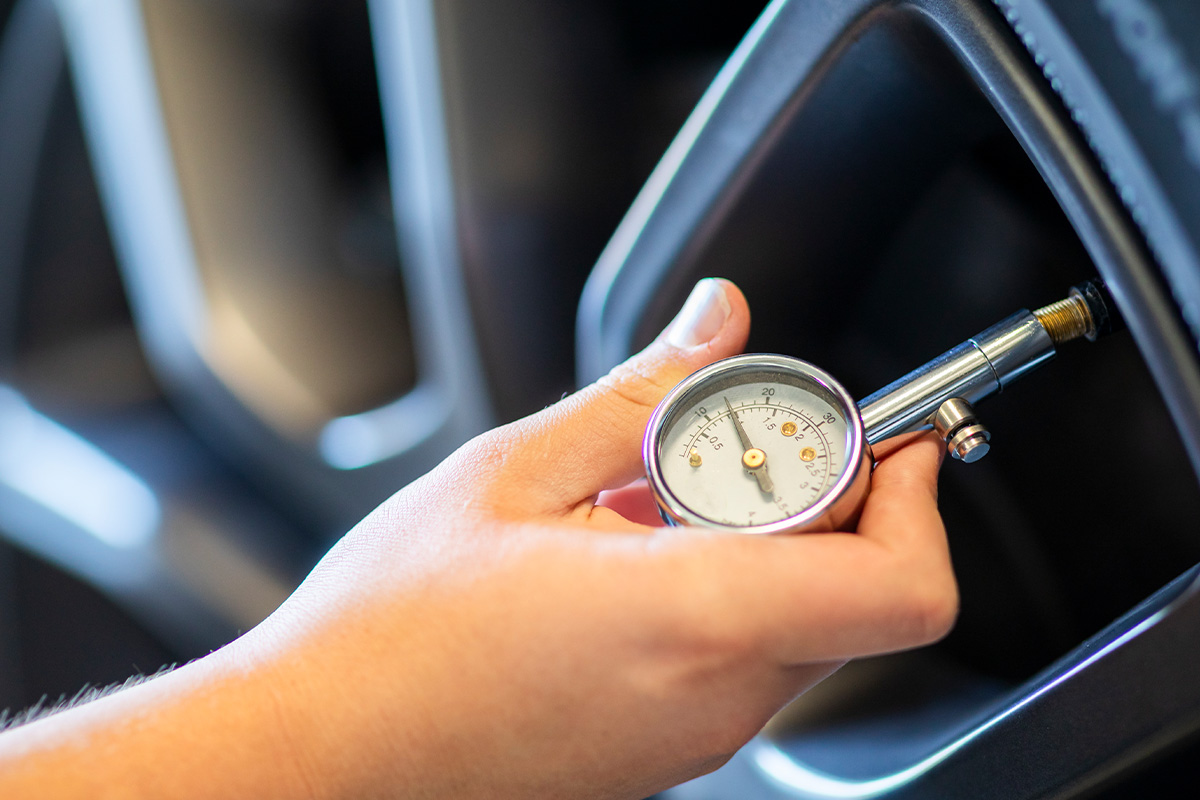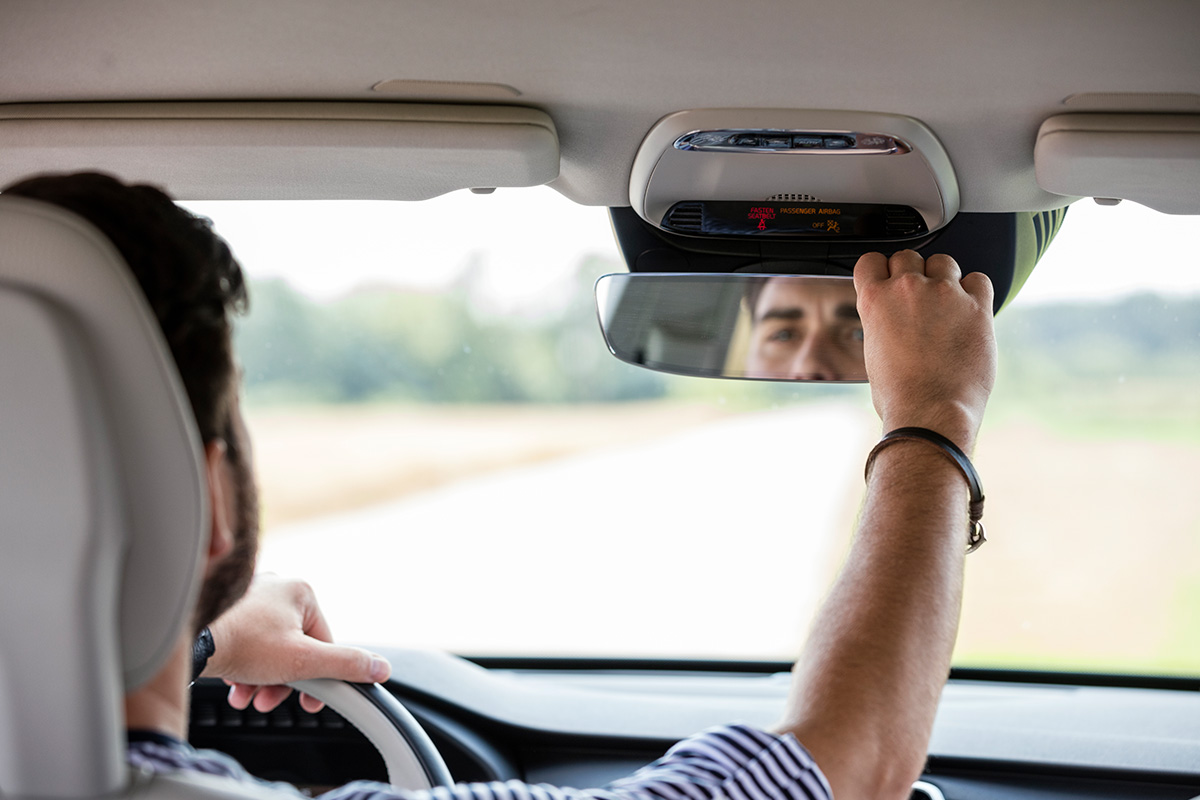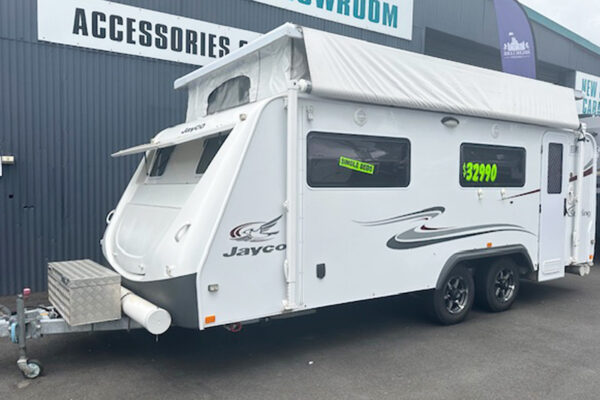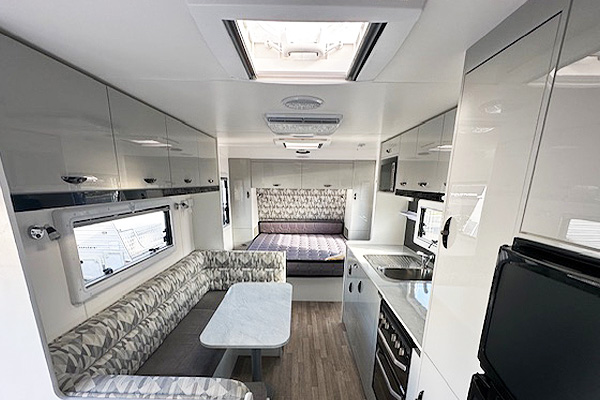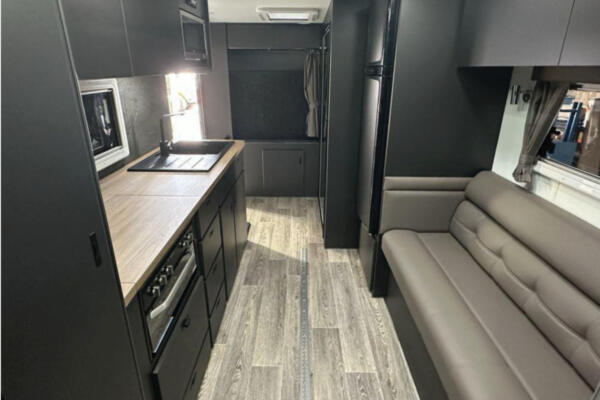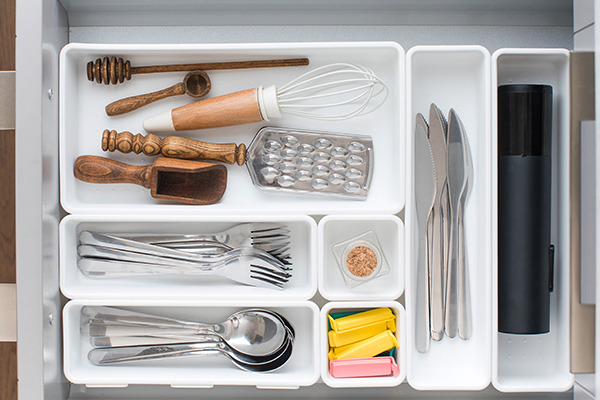Keep up to date with all things caravanning

Caravan Towing Guide
October 19, 2022
Towing a caravan can be nerve-wracking with a poor setup, causing dangerous situations such as caravan sway. By understanding the safety requirements and proper driving techniques, you can improve your caravan towing experience. Our caravan towing guide explains how to determine your towing capacity and stay safe while towing. Technical jargon can be confusing to digest; this guide will assist with calculations for setting up your caravan. You’ll also learn how electric caravan brakes, brake control units, towing mirrors, and weight distribution hitches can help improve your towing experience. Finally, we’ll cover some vital road safety tips for towing, reversing, parking your caravan, and determining safe road conditions.
Know Your Towing Capacity
Towing capacity refers to the maximum loaded weight your vehicle can pull legally and safely when towing. All towing requirements, including speed limits, are legislated at a state level. Understanding and complying with towing capacity limits is important for many reasons.
Overweight vehicles are unsafe and illegal. They also put extra strain on your brakes and vehicle, causing damage and wear. Additionally, an overweight vehicle typically won’t be covered by insurance.
A common mistake when searching for a caravan is not understanding what you need to look at first: The caravan or the car. In many instances, customers will buy their car first, then shop for a caravan. What customers often overlook is the caravan weight according to their style of travel and what they’ll be packing.
When looking at caravans, cars and all the terminology around weights, this can be extremely
daunting. Below are a few key measurements to determine your towing capacity, followed by calculations to get you started:
Kerb weight: the weight of your towing vehicle with only the driver and vehicle liquids such as oil and fuel.
Aggregate trailer mass (ATM): the total weight of your caravan or trailer when unhitched from the towing vehicle. This weight is measured when carrying the maximum recommended load as detailed by your manufacturer.
Tow ball weight: the tow ball weight is the weight exerted on the tow ball by the caravan coupling. Both the vehicle and caravan manufacturers specify the maximum tow ball weight, which is typically 10% of the ATM. If the values provided by the vehicle and caravan manufacturers differ, the maximum tow ball weight is the smaller of the two. You can find your tow ball weight using tow ball weight scales.
Payload: the weight of any additional gear, passengers or cargo in your towing vehicle, including the tow ball weight.
Gross vehicle mass (GVM): the weight of your towing vehicle when fully loaded. This is the payload and kerb weight combined.
Tare mass: the weight of your caravan with accessories but without gear or cargo. This measurement is part of the ATM.
Trailer payload: the weight of any additional gear or cargo in your trailer or caravan.
Gross trailer mass (GTM): the total weight of your caravan or trailer when hitched to the towing vehicle. This is the tare mass and trailer payload combined.
Gross combination mass (GCM): the total weight of your loaded caravan and loaded towing vehicle when hitched together. This is the GTM and GVM combined.
These measurements can help you figure out if a vehicle is suitable for your needs in terms of weight capacity. We’ve already discussed tow ball weights; however, there are other important ratings when considering towing capacity. All of these ratings can be found in your vehicle and/or caravan owner’s manual:
Gross vehicle weight rating: this is the maximum allowable weight of your towing vehicle. Your GVM must not exceed this number.
Aggregate weight rating: this is the maximum allowable weight of your caravan when loaded. Your tare mass and trailer payload must not exceed this number.
Gross combined weight rating: this is the maximum allowable weight of your towing vehicle and caravan when fully loaded. Your GCM must not exceed this number.
There are two types of towing capacities; braked and unbraked. Depending on the vehicle, these towing capacities can range anywhere from 640kg (unbraked) to 6989kg (braked).
Braked towing capacity refers to the maximum towing capacity when your caravan has its own brakes. Unbraked refers to the maximum towing capacity when your caravan does not have its own brakes. Unbraked capacity will always be lower and is limited to a maximum of 750kg in Australia.
Calculations to set up your caravan
When setting up your caravan, let’s start with the tare mass. This weight does not allow for gear, cargo, gas, water or any aftermarket options added to the caravan. Note that with a second-hand caravan’s tare mass, be mindful that the plated tare weight might not be accurate due to previous owners adding aftermarket accessories, increasing the caravan’s weight. At Canterbury Caravans, we have onsite scales that can accurately measure the weights of caravans to ensure you are not overweight.
The next mass is the aggregate trailer mass (ATM) which is the maximum recommended load when unhitched from the towing vehicle, as detailed by the manufacturer, including the tare mass.
If we do a sample calculation of 2000kg tare mass with an ATM of 2500kg, it would be 2500 – 2000 = payload of 500kg.
You will get varying amounts from 300kg to over 1000kg user payload. None of this is an issue, provided that the payload you have will adequately allow for all you need to carry and still fall under the maximum towing capacity of your towing vehicle.
If we look more closely at a user payload, this can be broken down as a guide:
Water tank = 1 kg per litre, e.g. 2 x 95 ltr water tanks = 190kg (customers could get away with a lighter payload if visiting caravan parks, as they may not need to fill water tanks)
Gas bottles = 1 kg per litre eg. 2 x 9kg gas bottles = 18kg
Clothing = 1 large suitcase = 20kg
Food = allowance of 30kg
Camping gear ( kitchen utensils, chairs, tables, toiletries ) = allowance of 100kg
Tools = allowance 15kg
Hot water system = 20kg
Beverages = allowance 15kg
Incidentals = allowance 50kg
Estimated weight added to caravan = 458kg
Weight can add up very quickly. Be sure to factor in passengers and additional gear such as bikes, fishing gear, snowboards, bbq etc. We recommend a user payload of over 500kg.
The tow ball weight of a caravan will vary depending on the caravan layout, tyre sizes, suspension style or allowance for user payloads. In some instances, the tow ball weight at tare mass on a caravan could be quite light to make allowances for once the van is loaded. If the tow ball weight is too heavy to start with, the tow ball weight could exceed the maximum allowance or the car’s towing ability. Both the vehicle and caravan manufacturers specify the maximum tow ball weight, which is typically 10% of the ATM. An example of this is if your caravan is loaded at 3000kg, we recommend aiming for a ball weight of 300kg. A small percentage on either side of this will be fine and can easily be adjusted by shifting your weights in the way you load your caravan or using weight distribution devices.
Buying the right car and explaining towing weights
When looking at the right towing vehicle, this is where confusion can come into play. Many cars today are rated to tow 3500kg; however, they only have a GCM of 6000kg or less.
We often hear, “don’t worry, we can load more in the car, so we don’t overload the caravan”. This statement is not true. Your vehicle’s GCM is what measures all of the above, regardless of positioning.
To explain this simply, we used the following example:
Ford ranger 2021 3.2 ltr Wildtrak
Towing capacity 3500kg braked
Combined GCM = 6000kg
Kerb weight = 2257kg approx. including a half tank of fuel
If we use this simple calculation of 6000 – 2257 = 3743kg, at this point, the towing capacity is 3500kg.
Now we add the following to the car:
2 adult passengers = 170kg
Full tank of fuel = 40kg extra
ARB front bull bar accessory = 100 kg approx.
Secondary battery = 30kg approx.
Items in the rear tub = 100kg approx.
Total increased weight = 440kg added to kerb weight
New GVM is 2257kg + 440kg = 2696 kg total new weight on the car
If we use the same calculation, 6000 – 2696 = 3304kg, at this point, the new maximum towing
capacity is reduced by 196kg to stay under the vehicle GCM of 6000kg. The car’s GCM is important in determining the overall towing capacity. It’s not as simple as a towing capacity of 3500kg. This is true if you travel alone and don’t want a full tank of fuel.
There are GCM upgrades on many makes and models of cars, and Canterbury Caravans would highly recommend that if you feel you might be borderline in weight, speak to a car suspension specialist. They can advise on how you might be able to increase your car’s GCM.

Image source: https://www.drive.com.au/news/2022-isuzu-mu-x-3500kg-towing-capacity-payload-how-much-can-you-really-carry/
While there’s a lot of information to get caught up in, we recommend focusing on the below when setting up your caravan:
Tare mass: Understand that you will require a minimum 500kg payload on any caravan. Simply achieve this by taking the tare mass and adding 500kg as a minimum.
Tow ball weight: Ensure that once loaded, your caravan is towing roughly 10% of the overall weight on the tow ball.
Cars towing ability: Make allowances to the car’s maximum towing capacity based on passengers, accessories and payload of the car at the time of towing. This may reduce the car’s ability to tow the full amount plated on the tow bar.
Check Your Caravan Weight
To find your caravan measurements, you can use a weighbridge. A weighbridge is a large scale used to weigh vehicles which may be free or charged per use. Weighbridges can be used to find the ATM, GTM, GVM and GCM of your caravan and towing vehicle. You can find these measurements by doing the following:
ATM: rest your loaded caravan on its jockey wheel while on the weighbridge and unhitch it from the towing vehicle. Your caravan should be fully loaded with everything you need for your trip, including a full tank of water and gas.
GTM: weigh your fully-loaded caravan while hitched to the towing vehicle.
GVM: weigh only your fully-loaded towing vehicle, while hitched to the caravan.
GCM: weigh your fully-loaded towing vehicle and fully-loaded caravan while hitched.
While caravans and towing vehicles include the maximum capacities and basic measurements, it’s always important to reweigh your vehicle. This is to account for accessories and additions such as solar panels, batteries, etc. This is especially important when purchasing privately sold second-hand caravans, as private sellers have no legal requirement to provide up-to-date measurements. At Canterbury Caravans, we always reweigh the vehicle to accurately reflect the existing condition.
Correctly loading a caravan
When loading a caravan, it is extremely important to know how to distribute the weight correctly. The image below gives a great example of how to evenly position your items based on weight.

Image source: https://roadsafety.transport.nsw.gov.au/stayingsafe/drivers/caravan-safety/loading.html
By loading the heavier items over or forward of the axles, you will balance the caravan weight down low. If you have no option, bring the heavier items to the front of the caravan to
increase the ball weight. In turn, this will also hold the van better on the road by loading the medium-weighted items towards the front and rear will evenly distribute weight across the whole caravan. The lighter items above will not overload the cabinets. Canterbury Caravans recommends ball loading scales to accurately measure ball weights to ensure optimal ball weights are achieved.
Install Electric Caravan Brakes
As mentioned, caravan brakes can impact your towing capacity. However, the type of brakes can also impact your towing performance. At least one caravan wheel brake is required to tow over 750kg GTM and is crucial in avoiding sway. Additionally, for trailers over 2,000kg GTM, electric brakes are required on all wheels.
Electric brakes monitor the towing vehicle’s braking via sensors that respond to the tow vehicle’s brake lights. This means that when you brake, the electric controllers also activate, slowing the caravan wheels and avoiding any swaying.
Modern electric brakes also communicate with what’s known as a brake controller. Brake controllers use electronic stability control to automatically measure the momentum and stability of the caravan and control the electric brakes to prevent dangerous movement.
This functionality differs from mechanical or older braking systems, which are instead controlled by the towing vehicle’s brakes when pressure is applied by the driver.
Use Towing Mirrors for Caravans
On top of caravan brakes; you’ll also require towing mirrors. Towing mirrors are required by law in Australia to tow a trailer or caravan wider than the towing vehicle. Towing mirrors are designed to be longer than traditional rearview mirrors, allowing you to see around your caravan and get a clear view of the road. There are many types of towing mirrors, including:
Mirror-mounted: These towing mirrors are portable and can be attached via a clip or strap. This allows them to be easily removed when not towing.
Door-mounted: As the name suggests, these mirrors are attached to the doors, offering more stability than mirror-mounted towing mirrors. However, they come at a higher price point and are better suited to larger vehicles.
Bonnet-mounted: These mirrors are attached to a drawbar that is run across the bonnet of the towing vehicle. They are extremely durable but less easy to adjust.
Clearview: These mirrors are permanently installed, replacing the original rearview mirror.
In addition to towing mirrors, you can install a rear view camera on the back of the caravan for increased visibility; however, this is not a substitute for proper towing mirrors.
Use a Weight Distribution Hitch
The final tool you can use to improve your towing safety is a weight distribution hitch (WDH). WDHs are light spring beams that connect the caravan and tow vehicle, redistributing weight from the vehicle’s back wheels to the front. This can be especially beneficial when the tow vehicle is sagging at the back despite appropriate towing capacity. Weight distribution hitches, however, do not increase your towing capacity; they only decrease the potential for sagging and swaying.
If you have a longer or heavier caravan, you may need a weight distribution hitch. However, if you’re not sure which hitch is right for your caravan, our team can help you choose the best option.
Safely Towing a Caravan
The most important thing to keep in mind when towing a caravan is to drive safely. This means being aware of the weight and balance of your caravan and driving carefully on the road. With over 60% of Australia available only to off-road vehicles, a proper understanding of safe road and driving conditions are extremely important. Some things you should consider prior to setting out on your journey include:
Traffic: What kind of vehicles frequent these roads? Will you need to pull off the road more? Prepare for these kinds of situations to avoid being caught off guard. Some vehicles, such as trucks or buses, can cause cross winds when overtaking, increasing the risk of sway.
Weather: What is the forecast for the days you are travelling? How will they affect road conditions? Can you postpone till safer conditions?
Trip length: What is the length of your trip? Have you planned regular rest stops? Towing can be extremely mentally tasking as it is more stressful than normal driving; prepare for fatigue and plan accordingly.
You can read more about how to safely tow a caravan on the Caravan Industry Association of Australia’s website.
Two of the most commonly difficult caravan situations include reversing and parking. Below we discuss how you can complete both in a step-by-step guide.
Reversing a Caravan
It’s important when reversing a caravan to take your time. Rushing through the process of reversing often puts you in frustrating situations forcing you to start over. If using a weight distribution hitch, remember to disengage the sway control prior to reversing.
Depending on what angle you are approaching the parking bay, these instructions may vary. In this scenario, the bay is on the right. If you are parking in a bay on the left, begin on the left and reverse any directions mentioned.
-
- Find the starting point of your turn. Either you or a buddy can stand at the front right-hand corner of the parking bay. The elected person should then walk two steps forward, then four larger steps to the right. This will determine the starting point. If possible, mark this area with chalk or a stick.
- Reverse so that the right-hand rear corner of your caravan is aligned with the marked point. Use your mirror as a guide; if you see too much of your caravan in the mirrors, adjust your wheel till you see an equal amount in each mirror. This will mean you are reversing directly backwards.
- Reverse slowly to prevent oversteering, remembering to rotate the wheel right to turn the caravan left and left to turn the caravan right. In this situation, you should be turning your wheel to the left.
- When you reach the right-hand corner of the bay, slowly turn the wheel the opposite way.
- If oversteering, come to a full stop and move forward to straighten the caravan.
Parking a Caravan
After successfully reversing the caravan, you can park your vehicle. It’s important when parking that you leave adequate space for things such as awnings and doors. Once reversing is complete, parking is far simpler to complete.
-
- Once the caravan is successfully parked, activate the caravan handbrake.
- Ensure that all wheels are secured and immovable. Inspect the caravan carefully to ensure that it is stable.
When towing a caravan, it is important to ensure your setup is safe and legal. At Canterbury Caravans, we can assist you in determining your caravan weights and towing capacity. We can also advise you on the various braking systems, towing mirrors and weight distribution hitches that are available to make your towing setup more stable.
With the right towing setup and some towing practice, you can feel confident hitting the road for your next big adventure. Contact the Canterbury Caravans team today to learn how we can improve your towing experience.
